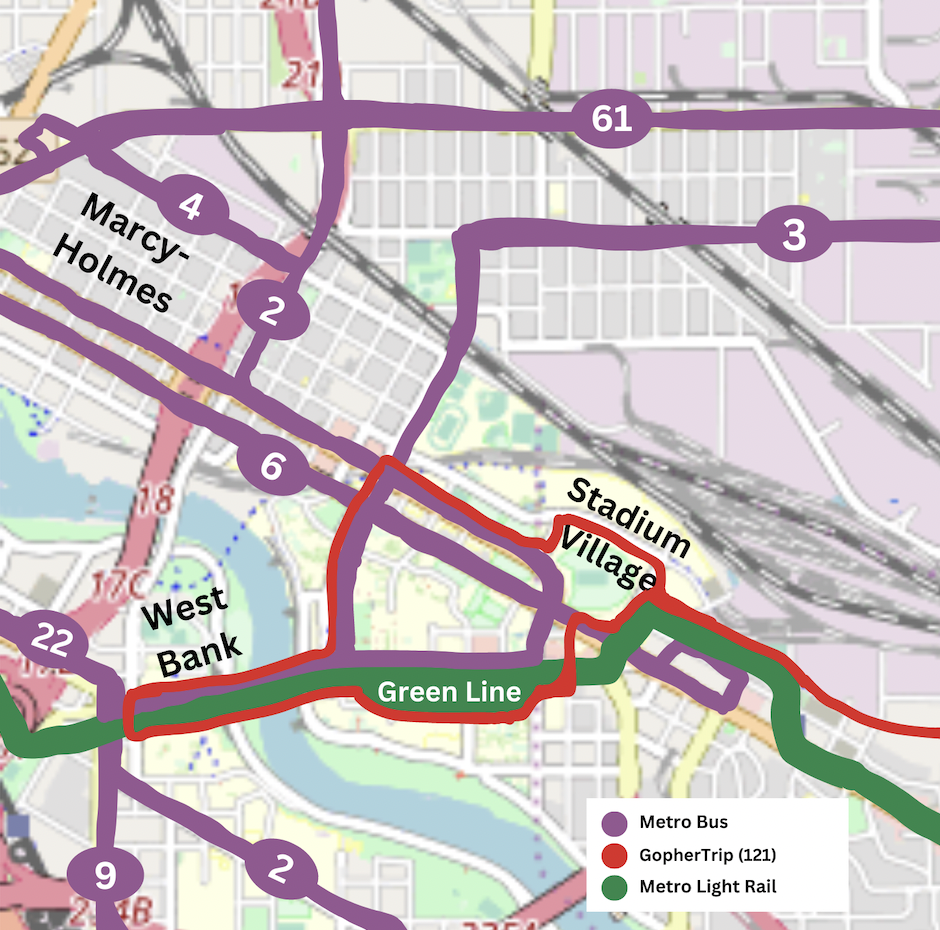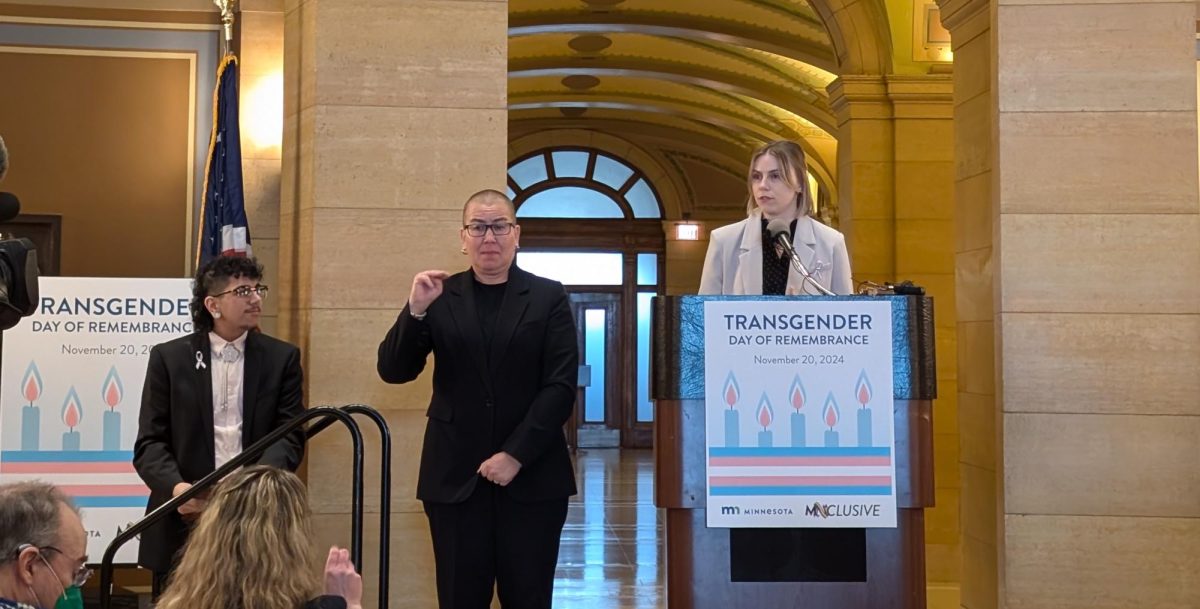Metro Transit is adjusting bus and light rail frequency to meet the high demand for public transit around campus.
Adding extra trains and buses, hiring more operators and drivers, and coordinating with the University are all ways Metro Transit is addressing the needs of riders, Metro Transit Chief Operating Officer Brian Funk said.
“We’re looking at more of a surgical approach, so where do we need the capacity specific to address the high travel times when these classes start,” Funk said.
Starting in August, Metro Transit lowered wait times for trains at light rail stations from 15 minutes to 12 minutes after 10 a.m., Funk said.
“We know that when trains are coming every twelve minutes, even if they’re the shorter two-car variety, that we’re not seeing (rider) numbers that are overwhelming,” Funk said.
Metro Transit is also looking to add extra trains during busy travel times, Funk said. This is meant to address the high number of people riding the train near the University campus, specifically the Prospect Park, Stadium Village, East Bank and West Bank stations.
“We’re looking at strategies to be able to insert an extra train during those really high periods so we can just have one come through and scoop up people three or four minutes ahead of the planned train,” Funk said.
Funk said Metro Transit is addressing the high demand for buses in similar ways by scheduling extra trips near the University. However, construction around campus, particularly along 4th Street in Dinkytown, has complicated those efforts, Funk added.
“(The construction) eventually is going to lead to really good service, but in the meantime, it causes us to get delayed, primarily buses,” Funk said.
In addition to inserting extra trips into the schedule, Metro Transit is continuing to hire new bus drivers and train operators, Funk said. Metro Transit is currently training 50 new bus drivers and 17 new train operators.
To ensure Metro Transit buses run smoothly alongside University buses, Metro Transit has collaborated with the University for many years on coordinating their schedules with the University to prevent traffic and backups at bus stops, Funk said.
Metro Transit also collaborates with the University through combined public safety efforts with the Metro Transit Police Department and the University of Minnesota Police Department, Metro Transit General Manager Lesley Kandaras said.
“Our police department has been partnering with the University police department to have them help patrol trains at certain points in time, but in general, there’s a strong partnership,” Kandaras said.
Kandaras said Metro Transit is “actively implementing” the Safety and Security Actions Plan created in 2022.
“One key part of that is increasing official presence on our system,” Kandaras said. “In addition to the Metro Transit Police Department, we’ve added additional layers of presence.”
Sometimes the “presence” is in the form of security, but it is also achieved through the Transit Rider Investment Program (TRIP) agents, Kandaras said.
“Our (TRIP) agents are not police, but they are out riding the light rail, checking fares, assisting customers, answering questions, and really being eyes and ears out there,” Kandaras said.
Funk said since the program launched in February, Metro Transit has between 35 and 40 TRIP agents and hopes to have 100 by the end of next year.
While ridership on campus is high, Metro Transit is still looking to accomplish its goal of increasing ridership across the city, Funk said.
“Even with the increase in ridership over here on campus, we’re still not anywhere near where the ridership was before the pandemic,” Funk said.














